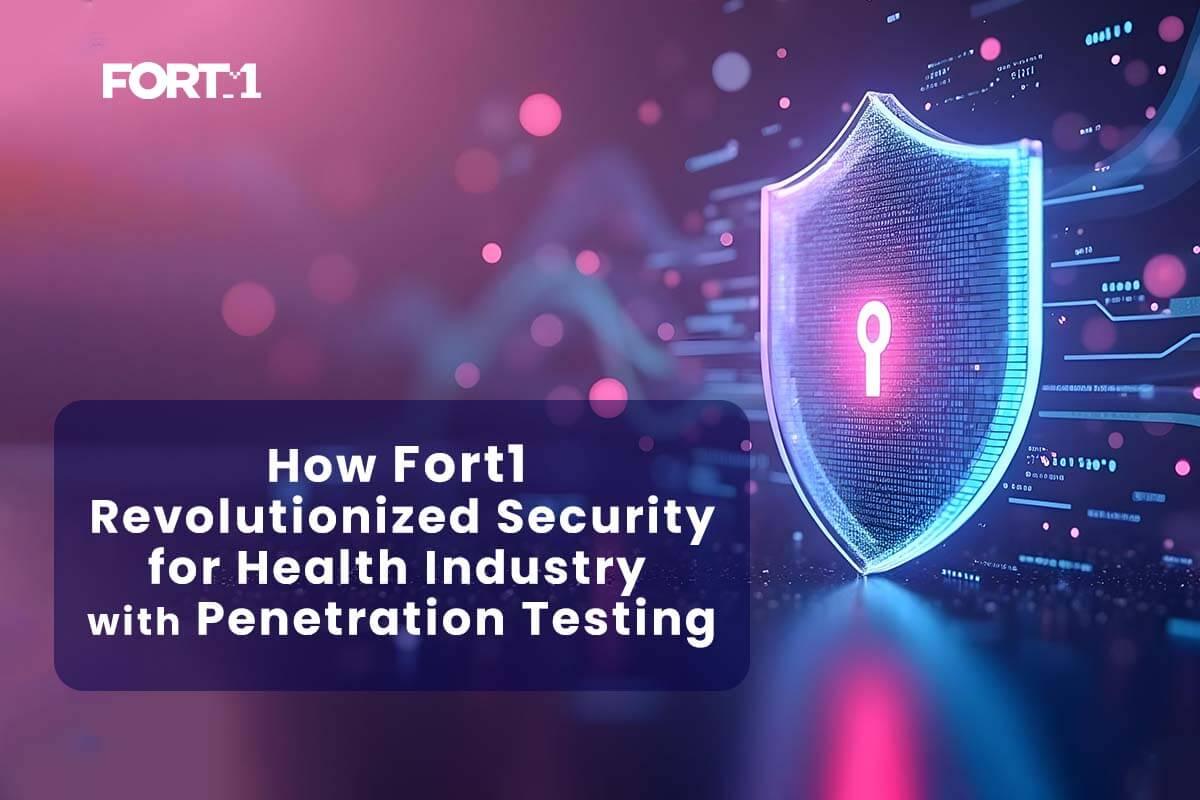In an era where cyber threats are becoming increasingly sophisticated, the health industry stands as a high-value target for attackers. Protected Health Information (PHI), critical patient data, and essential systems are often at risk of breaches. These risks are exacerbated by the growing adoption of electronic health records (EHR), telemedicine, and connected medical devices, all of which expand the attack surface for malicious actors. Recognizing these challenges, Fort1 partnered with a leading healthcare provider to implement a comprehensive penetration testing strategy. This strategy not only identified vulnerabilities but also significantly improved their overall security posture, ensuring compliance with regulations and safeguarding sensitive patient data.
Source: Australian Digital Health Agency on EHR Risks
The Challenge
The healthcare provider, a large network of hospitals and clinics, faced a dual challenge:
- Rapid Digital Transformation: Transitioning to electronic health records (EHR) and cloud-based systems introduced new attack surfaces. As the organization sought to enhance operational efficiency and patient care, the shift to digital solutions also exposed them to cyber threats such as ransomware, phishing, and data breaches. These threats posed serious risks to the confidentiality, integrity, and availability of patient data.
- Regulatory Compliance: Meeting stringent compliance requirements such as the Australian Privacy Act, APRA standards, and ISO 27001 was a significant concern. Failure to comply could result in hefty fines, reputational damage, and loss of trust. Additionally, maintaining compliance required continuous monitoring and addressing vulnerabilities in real-time to stay ahead of emerging threats.
Despite implementing basic security measures like firewalls and antivirus software, the organization lacked a clear understanding of its cyber risks and required a detailed assessment to address potential gaps effectively.
Fort1’s Approach
Fort1’s approach was grounded in a thorough understanding of the healthcare provider’s operational and regulatory landscape. We adopted a multi-phased penetration testing strategy tailored to their unique environment:
- Scoping and Planning: Collaboration was key to the success of this project. Fort1 worked closely with the organization’s IT and security teams to define a precise scope of testing. This included identifying high-risk areas such as EHR systems, IoT devices (e.g., medical monitors and diagnostic equipment), cloud storage platforms, and even physical security controls. By understanding the critical assets and their interdependencies, Fort1 ensured a focused and impactful testing process.
- Testing Execution: Leveraging state-of-the-art tools and methodologies, Fort1 conducted multiple types of penetration tests:
- External Penetration Testing: Simulated attacks on publicly accessible systems, such as patient portals, websites, and email servers, to identify vulnerabilities that could be exploited by external attackers.
- Internal Penetration Testing: Mimicked insider threats, evaluating risks posed by disgruntled employees, compromised credentials, or insecure internal systems.
- Web Application Testing: Analyzed the security of healthcare applications, particularly those managing patient data and administrative functions, for vulnerabilities such as SQL injection and cross-site scripting (XSS).
- IoT Device Testing: Assessed the security posture of connected medical devices to ensure they were not potential entry points for attackers.
- Risk Analysis and Reporting: Fort1 provided a detailed and actionable report prioritizing vulnerabilities based on their impact and likelihood. Each identified issue was accompanied by practical remediation steps, helping the healthcare provider’s internal team address the gaps effectively.
- Post-Remediation Validation: To ensure long-term security, Fort1 conducted follow-up penetration tests after the implementation of remediation measures. This step confirmed that all vulnerabilities had been successfully mitigated and that new security protocols were effective.
Source: OWASP Penetration Testing Guide
The Solution
Fort1’s penetration testing uncovered several critical vulnerabilities, including:
- Weak Access Controls: Cloud storage systems lacked robust access controls, making them susceptible to unauthorized access and potential data breaches.
- IoT Device Misconfigurations: Medical IoT devices were found to have default passwords and outdated firmware, exposing them to exploitation.
- Application Vulnerabilities: Cross-site scripting (XSS) and insecure API endpoints were identified in the patient portal, posing risks to user data integrity and confidentiality.
Fort1 provided tailored solutions to address these vulnerabilities, such as:
- Implementing multi-factor authentication (MFA) across all critical systems.
- Enforcing stringent password policies and securing APIs with industry-standard encryption protocols.
- Conducting regular firmware updates and security audits for IoT devices.
These measures not only eliminated existing vulnerabilities but also fortified the healthcare provider’s overall security architecture, ensuring a proactive defense against future threats.
Results and Impact
The healthcare provider witnessed transformative outcomes, including:
- Enhanced Security Posture: By addressing critical vulnerabilities, the organization significantly reduced its risk exposure to cyber threats. This improvement was reflected in a measurable reduction in attempted breaches and unauthorized access incidents.
- Regulatory Compliance: The healthcare provider successfully met all compliance requirements. Their next audit report highlighted zero security findings, showcasing the effectiveness of the implemented measures.
Improved Trust: Demonstrating a strong commitment to safeguarding sensitive data bolstered patient trust and confidence in the organization’s services. This enhanced reputation contributed to a noticeable increase in patient satisfaction and retention.
Client Testimonial
“Fort1’s penetration testing was a game-changer for us. Their detailed insights and hands-on guidance empowered our team to address vulnerabilities proactively. Today, we’re not just compliant; we’re secure. Partnering with Fort1 has been one of the best decisions for our organization’s cybersecurity.” - Chief Information Security Officer, Leading Healthcare Provider
Fort1’s tailored penetration testing approach underscores the critical importance of proactive cybersecurity measures in the health industry. By identifying and addressing vulnerabilities, Fort1 enabled the healthcare provider to secure their systems, protect patient data, and achieve compliance with confidence. This case is a testament to Fort1’s expertise in delivering results-driven cybersecurity solutions that empower businesses to operate securely in an increasingly digital world.
Take the Next Step
Secure your organization with Fort1’s cutting-edge penetration testing services. Contact us today to identify and eliminate vulnerabilities before they can be exploited. Visit Fort1 Penetration Testing Services for more information.

